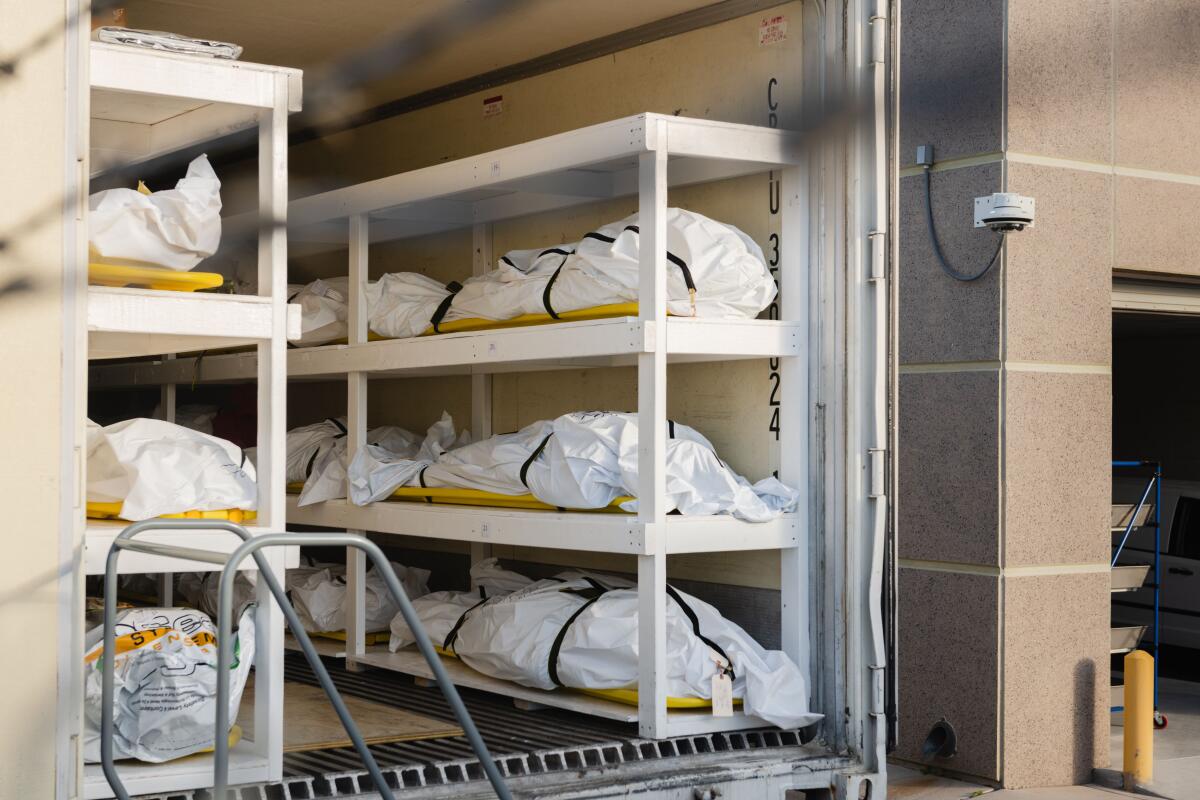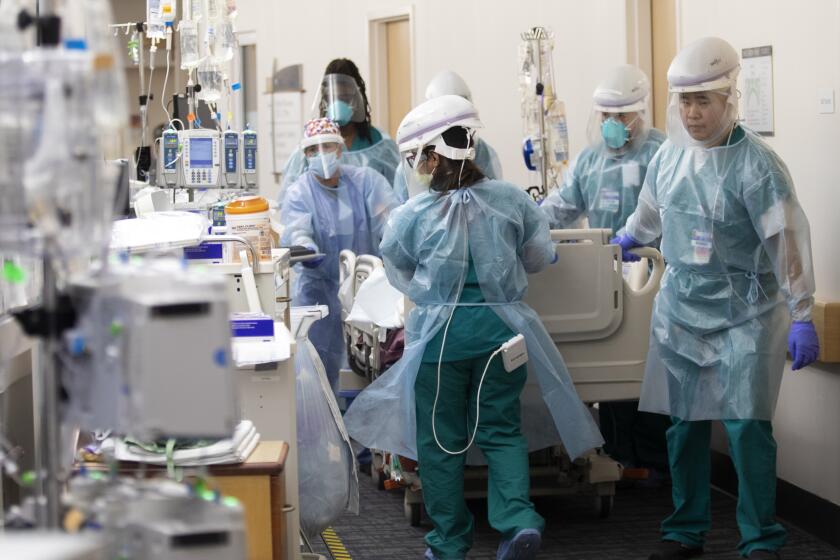U.S. deaths in 2020 top 3 million, by far the most ever counted. COVID-19 is to blame

A year that has set all kinds of dubious records will add one more to the list before coming to a close — as the deadliest in U.S. history.
Deaths in 2020 are expected to top 3 million for the first time. As with so many other grim milestones this year, the COVID-19 pandemic is largely to blame.
Final mortality data for the year will not be available for months. But preliminary figures suggest that the United States is on track to see more than 3.2 million deaths. That would be about 400,000 more than in 2019, when there were 2,839,205, according to data from the Centers for Disease Control and Prevention.
U.S. deaths increase in most years, so some annual rise is expected. But the 2020 numbers amount to a jump of about 15% — and could go higher once all the December deaths from the post-Thanksgiving coronavirus surge are counted.
Either way, it would mark the largest single-year percentage leap since 1918, when tens of thousands of U.S. soldiers died in World War I and hundreds of thousands of Americans perished in a flu pandemic. When all the carnage was accounted for, deaths in 1918 were 46% higher than in 1917.
COVID-19 has killed more than 319,000 Americans and counting. But before it burst onto the scene, there was reason to be hopeful about U.S. death trends.
The nation’s overall mortality rate fell a bit in 2019 because of reductions in heart disease and cancer deaths. And life expectancy inched up — by several weeks — for the second straight year, according to death certificate data released Tuesday by the CDC’s National Center for Health Statistics.
But life expectancy for 2020 could end up dropping by as much as three years, said Robert Anderson, chief of the mortality statistics branch at the NCHS.
A winter surge of COVID-19 is now unavoidable, experts say, though its magnitude depends on what we do next. Hundreds of thousands of lives hang in the balance.
The CDC counted 2,854,838 U.S. deaths last year, nearly 16,000 more than in 2018. That’s fairly good news: Deaths usually rise by 20,000 to 50,000 each year, mainly due to the nation’s aging, and growing, population.
Indeed, the age-adjusted death rate dropped about 1% in 2019, and life expectancy rose by about six weeks, to 78.8 years, the CDC reported.
“It was actually a pretty good year for mortality, as things go,” Anderson said.
Then the coronavirus came along.
The virus was first identified late last year in China, and the first known infection on U.S. soil was detected in January.
By some measures, COVID-19 is now the leading cause of death in the U.S., killing more Americans each day than heart disease and cancer, according to an analysis published last week in the Journal of the American Medical Assn.
But some other types of deaths also have increased.
A burst of pneumonia cases early this year may have been COVID-19 deaths that weren’t recognized as such in the initial days of the outbreak. But there also have been an unexpected number of deaths from certain types of heart and circulatory diseases, diabetes and dementia, Anderson said.
Many of those deaths, too, may be related to COVID-19. The virus could have weakened patients already struggling with those conditions, or it could have diminished the care they were getting, he said.
U.S. infectious disease experts underestimated the fast-moving coronavirus outbreak in its early days, assuming the country would emerge largely unscathed.
Early in the epidemic, some were optimistic that car-crash deaths would drop as people stopped commuting to work and shunned social events. Data on that are not yet in, but anecdotal reports suggest there was no such overall decline.
Suicide deaths dropped in 2019 compared with 2018, but early information suggests they have not continued to fall this year, Anderson and others said.
Deaths due to drug overdoses, meanwhile, got much worse. Before the coronavirus emerged, the U.S. was in the midst of the deadliest overdose epidemic in its history. Last week, the CDC reported more than 81,000 overdose deaths in the 12 months that ended in May, the highest number ever recorded in a one-year period.
Experts say the pandemic’s disruption of in-person treatment and recovery services may have been a factor. People also are more likely to be taking drugs alone — without the benefit of others who can call 911 or administer overdose-reversing medication if necessary.
But perhaps a bigger factor are the drugs themselves: COVID-19 has caused supply problems for dealers, so they are increasingly mixing cheap and deadly fentanyl into heroin, cocaine and methamphetamine, experts said.
“I don’t suspect there are a bunch of new people who suddenly started using drugs because of COVID,” said Shannon Monnat, a Syracuse University researcher who studies drug overdose trends.








